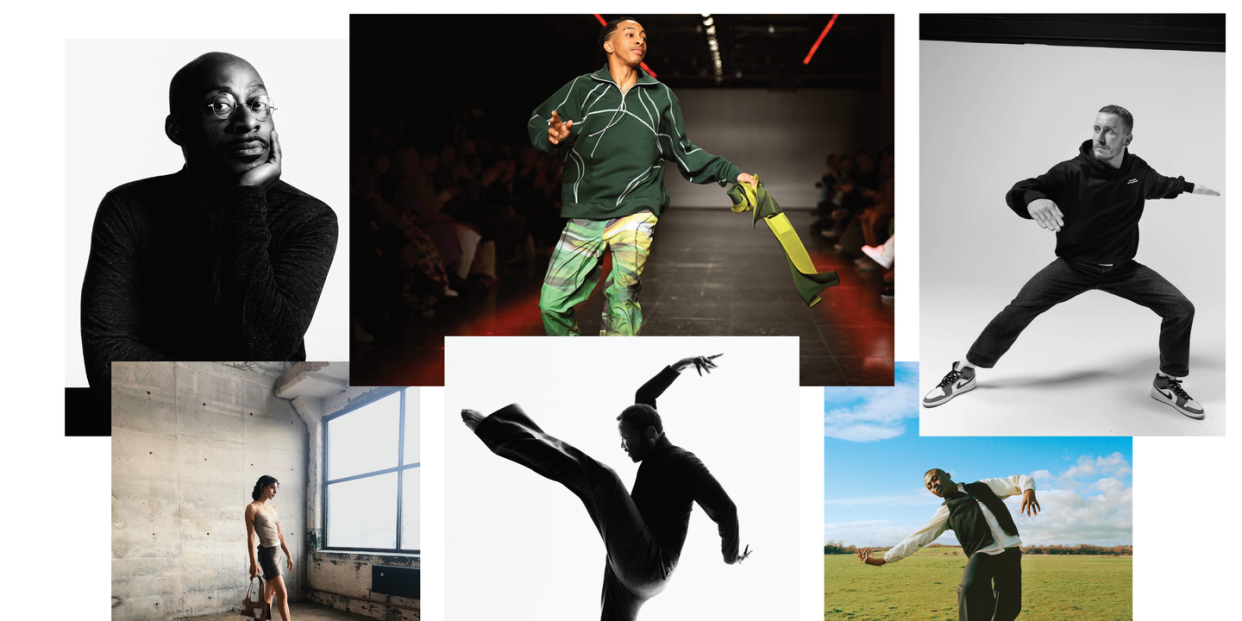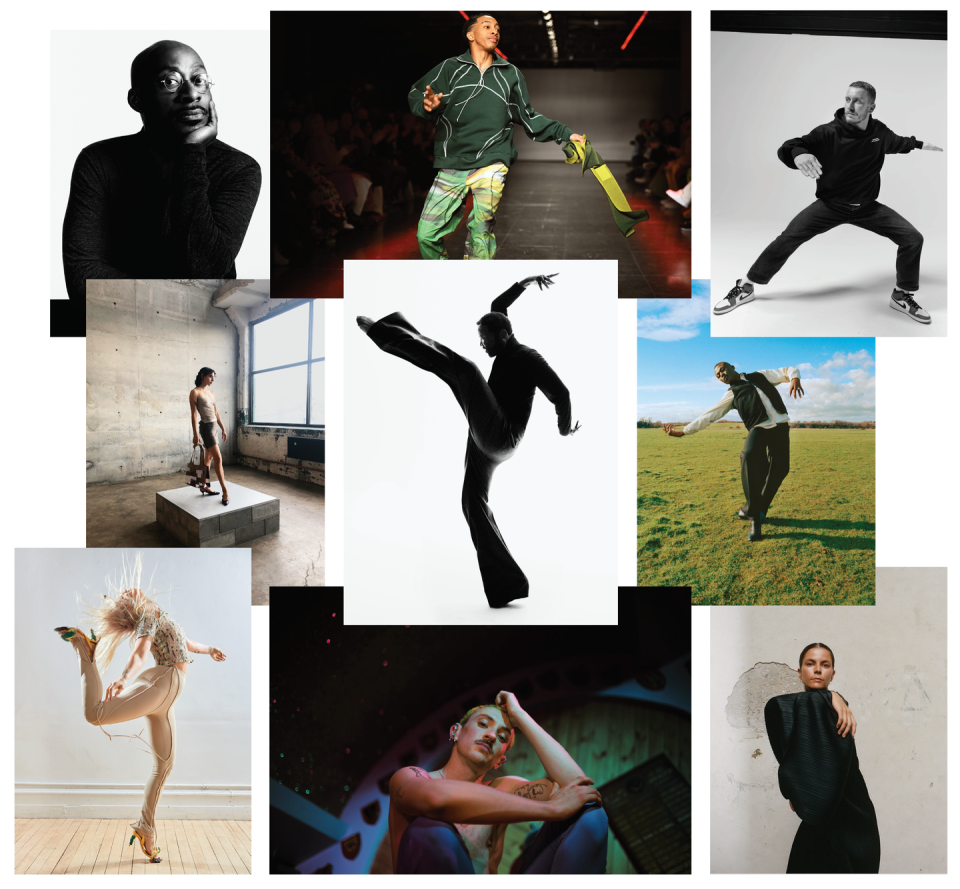Meet the Catwalk Whisperers


“Work it, girl (Give a twirl!) / Do your thing on the runway,” RuPaul famously exhorted in “Supermodel (You Better Work),” his hit 1992 ode to the coltish catwalk strides of Linda, Naomi, Christy, Cindy, and the rest of the mononymous wonder women of the ’90s. But by the early aughts, much of that singularity and originality had disappeared. It was supplanted by the militaristic stomp of processions of stern-looking young models who didn’t pose as much as pause (quickly) at the end of the runway so the camera pit could snap the kind of flat, standardized slideshow imagery that the dawn of digital media demanded.
Now, though, the pendulum appears to have swung back. Personality, performance, and theatricality are once again being celebrated at fashion shows—and “working it” is experiencing a renaissance too. TikTok has something to do with that: The social-media platform du jour has built an entire memetic universe around movement—in particular, dance—and fashion shows have the potential to reach a much wider audience if they go viral there. Plus, those ’90s runway walks have been rediscovered by Gen Z stans who memorialize them in carefully curated montages. And even runway photographers are mixing it up, supplementing traditional straight-on shots by capturing the way clothes move from a variety of angles and perspectives.
While it might seem like anyone with enough swagger can strut, the secret to a good walk has always been knowing how to move. Enter the movement director. Not quite choreographer, though often with a background in dance, a movement director sits at the intersection of the performing arts and fashion, tasked with bringing the ideas at play in a collection to life and helping today’s models put their best foot forward. Pioneers in the field such as Stephen Galloway and Les Child have made the role an essential part of fashion shows.
“I always thought that the title ‘choreographer’ just didn’t seem right,” says Los Angeles–based Galloway, who collaborates with Tom Ford and Brandon Maxwell and danced with Ballet Frankfurt for two decades before retiring in 2005. (He also served as what he half jokingly refers to as “hips and lips coordinator” for the Rolling Stones.)
In the early 2010s, Galloway started working on campaign and editorial shoots with photographers Inez van Lamsweerde and Vinoodh Matadin, which led to fashion-show commissions. “I can do a good Janet Jackson ‘Rhythm Nation’ 5-6-7-8, but I was never really choreographing the models. I was giving more of a movement suggestion,” he explains. Galloway decided to call himself a “creative movement director,” and thus movement direction as we now know it was born.
For Ami’s Fall 2022 show this past January at Paris’s Palais Brongniart, which sits above a transport hub, designer Alexandre Mattiussi wanted the models to embody a “subway type of energy,” which Galloway had them translate by moving with a driven sense of anticipation. “I said, ‘You’ve got to get to the grocery store. They only have that one sandwich that you want. You have to figure out a way how to get to that. Because if you don’t get there with purpose, it’s going to be gone,’ ” Galloway recalls.
The goal of a movement director, according to Child, a former dancer with Michael Clark Company who founded the U.K.’s first vogue house in the late ’80s, is to draw out models’ personalities. “I don’t want them walking the generic way that the agents teach, where they stomp quite aggressively,” he says. “I’m like, ‘Oh my God, you scared me to death, girl! No, love, let’s see you.’ ”
Child, who has directed shows for BodyMap, Bella Freud, and Alexander McQueen, is now Kim Jones’s go-to movement director at Fendi. “I have known and admired Les since I was a teenager,” says Jones. “His skills and ability to make the models and performers at ease and alive are second to none. He knows how to make a character.”
Galloway and Child have set the stage for a new cohort of movement directors who are helping to reconceive the role movement can play in presenting a collection. During Maison Margiela’s Spring 2020 show, model Leon Dame barreled down the runway with a zigzagging, hip-dipping strut that instantly went viral. “People were calling, saying, ‘Oh, that was something new,’ ” recalls Pat Boguslawski, a Paris-based movement director who has worked with John Galliano at Margiela since 2018. (Boguslawski also got his start in dance, studying at the Debbie Reynolds Performing Arts Studio in L.A.) “I was like, ‘That was nothing new. Back in the day, people were doing more crazy things on the runway, and it wasn’t shocking.’ ”
When audiences are trained to expect a steady pace, altering the speed or energy of a walk can be arresting. Sigrid Lauren, one half of the Brooklyn-based performance-art duo FlucT, created an almost trancelike effect at Peter Do’s Fall 2022 show by challenging the models to walk languidly around the three sides of the open stage and then even slower down the central runway.
At Marni in Milan, Brooklyn-based Sharleen Chidiac devised a pattern that saw the models pass through the standing-room-only audience in a dark, cavernous space led by flashlight-wielding art-school-student “torchbearers” before stepping onto an elevated runway. “It was very intentional that it was slow and maybe not what you expected a fashion show to be,” she says. “I directed them to be meditative and openhearted and just very present and light.”
For Harris Reed’s Fall 2022 show in London, Simon Donnellon, a Rambert School of Ballet and Contemporary Dance–trained movement director, worked with the designer to create a tableau vivant of sorts that featured models in exaggerated gigot-sleeve blouses and fishtail maxiskirts making big, deliberate arm gestures—very slowly—to a live soundtrack by Sam Smith. “A big, impactful movement captures my eye way more than a still image,” says Donnellon. “I’ve always prided myself on never doing the traditional quote-unquote ‘runway experience,’ with emotionless faces and a bunch of stomping, but actually showing characters living themselves,” adds Reed.
That same week in London, designer Jawara Alleyne put on an exuberant slashed, safety-pinned ode to punk rebellion. “I got all these models to walk down the catwalk smiling and swearing at people,” says the show’s movement director, Yagamoto. “So they’ll smile here, and then they’ll change their attitude and give people dirty looks on this side and give people middle fingers up here and blow kisses there.”
The right movement direction can result in a more engaged audience, which is crucial during these highly distractible social-media-dominated times. “It has to be something that stops you from scrolling, essentially,” says Emma Chadwick, a New York–based Ballet Basel alumna who worked on many of Proenza Schouler’s recent video projects and teamed with Coach and Khaite this season. “Designers know that people want to see clothes moving in a way that’s unexpected.” Chadwick incorporates a broad range of gestures into her movement direction; the Stranger Things–esque mise-en-scène at Coach featured a model walking a dog and two others on bicycles. Khaite showcased models strolling in pace with a spotlight-wielding robotic arm.
For London-based designer and movement director Saul Nash, the two sides of his practice are one and the same. “When I’m designing, I’m thinking about what the day-to-day life of the end wearer might be and whether my clothes inhibit movement or enable freedom,” says Nash, who studied performance design and practice at Central Saint Martins before pursuing a master’s in menswear design at the Royal College of Art. He frequently has friends from the contemporary-dance world walk in his shows.
Ultimately, what many of these movement directors hope to achieve, in addition to getting your attention, is a sense of whimsy and joy. “I think one thing that has come out of the shows since the pandemic is the models are acting like they’re happy to be there,” says Galloway. “For so long, they were conditioned not to care, but if people see they are having fun in the show, it lifts spirits.”
That’s something Patric DiCaprio, the codesigner of New York label Vaquera, can get behind. Models at the brand’s shows perform an intense speedwalk with the torso thrust forward, arms pumping, and feet stomping in a seeming parody of the plodding, somber ’00s march. Casting director Walter Pearce of Midland Agency created the walk while modeling for Hood by Air and has since evolved it in his behind-the-scenes work on shows for Vaquera and Eckhaus Latta. “Fashion is not that serious, so it’s great when people can find humor in it,” DiCaprio says. “Because we do too! That’s part of why we’re like, ‘I’m so fierce; let me do my crazy walk.’ It’s funny to exaggerate it to the point that it’s almost like a meme.”
You Might Also Like